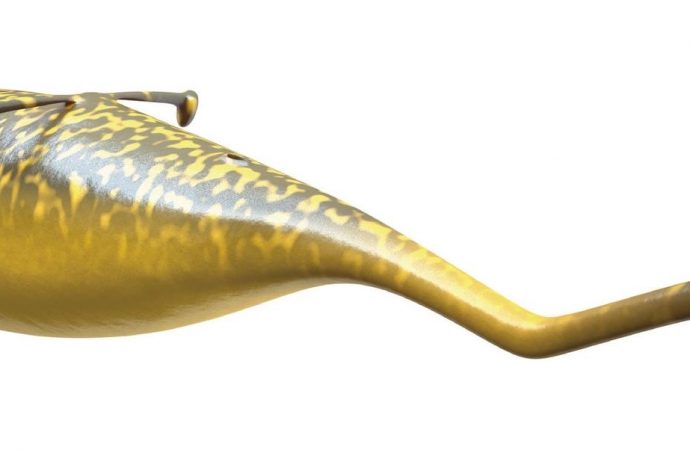“In April 2016, I wrote about the 308-million-year-old Tully monster. It was about a foot long, had a squid-like diamond-shape tail and a long snout ending in a claw.” ~~ Dale Gnidovec
Discovered in 1958, this paleontological enigma had stymied biological classification for nearly 60 years. Although it was found in only one place on Earth — the famous Mazon Creek site about 15 miles southwest of Chicago — thousands of specimens have been unearthed.
At that time last year, a group of scientists announced that they were finally able to classify the find as a vertebrate, the same group to which we belong.
I didn’t buy it. In my column, I said: “Although this is the most detailed study of the animal yet published, I am not convinced. The features they say support their conclusions are hard for me to pick out even on their most enhanced photographs.
“The preservation is not good enough for me to be confident that those features are the vertebrate characters they say they are.”
A recent report in the journal Palaeontology by an international team of scientists from the United States, Britain and France agrees. Although they still couldn’t say what the creature was, they said it certainly was not a vertebrate.
One vertebrate character it supposedly had was a notochord, a flexible rod of cartilage running down its back. This is present in the embryos of animals from halibuts to humans, and by maturity it is mostly replaced by a series of bones called vertebrae.
The problem is the faint line that had been identified as the notochord by the first group of scientists extends further forward than the eyes. That doesn’t occur in any other vertebrate.
Another characteristic of vertebrates are trunk muscles that form W-shape bundles called myomeres. Supposedly present in the Tully, recent experiments on certain groups of marine worms shows that under certain conditions, their muscles can take on vaguely myomere-like shapes when they decay.
Other features considered included gill openings, gill arches (the hard structures supporting the gills), nervous system and eyes. Many features characteristic of vertebrates simply were not there.
While all of these might be explained away as problems of preservation, undoubted vertebrates including fish and amphibians are known from the Mazon Creek site and they show the features in question preserved as they should be.
So what is the Tully monster? There are two candidates that seem most likely to me.
One is an arthropod somewhat similar to Opabinia, a bizarre animal known from the Burgess Shale, the famous Cambrian site in the Canadian Rockies. Even better are a kind of gastropod (snail) known as a pteropods, also known as sea angels or sea butterflies because of the wing-like flaps that allow them to swim.
In science, an explanation is proposed, further observations are made (often by a different group of people) and the explanation is discarded or modified to better agree with the observations. For now, the mystery of the Tully monster still stands, at least until scientists give it another look.
Source: The Columbus Dispatch

































Leave a Comment
You must be logged in to post a comment.